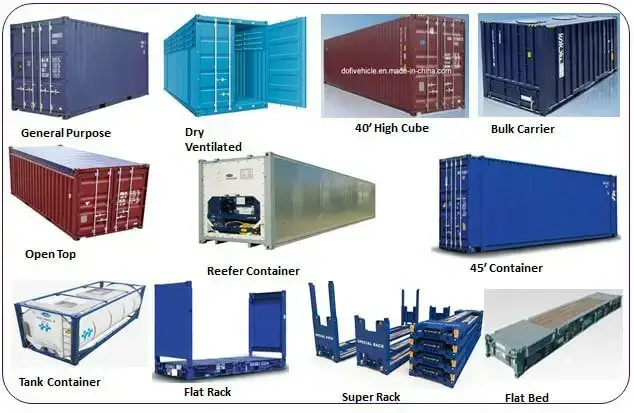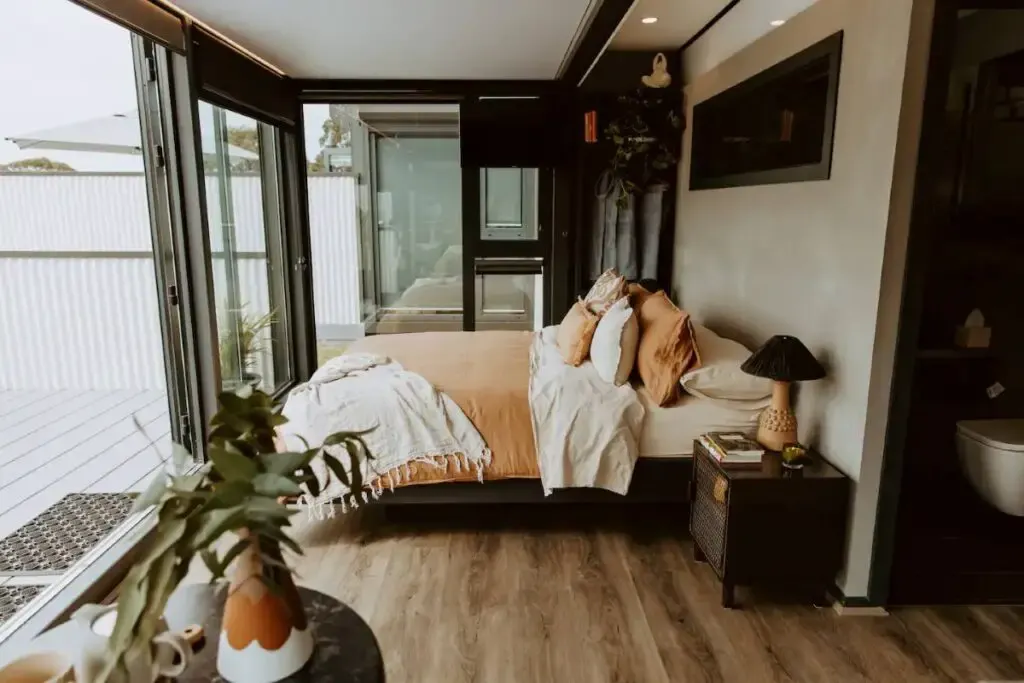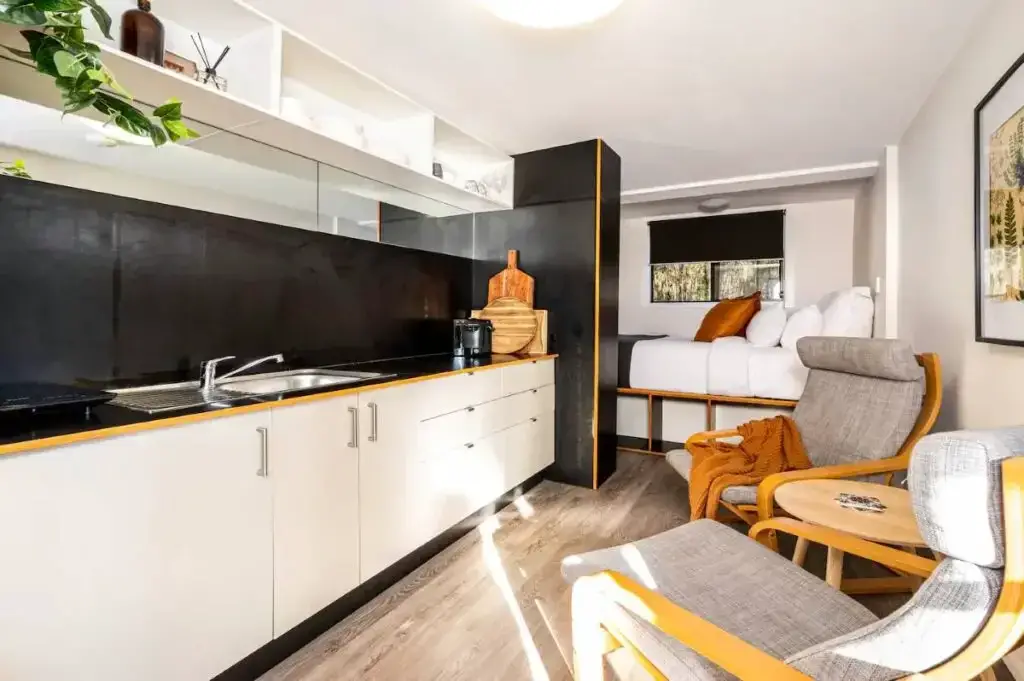Discover the rising trend of shipping container homes in New South Wales (NSW) and unlock a cost-effective and environmentally friendly way of living. As the demand for sustainable housing options continues to soar, more and more people are turning to shipping container homes as a viable solution in NSW.
With their modular design and adaptability, shipping container homes offer a range of benefits that go beyond just affordability. Not only do they provide a low-cost alternative to traditional housing, but they also contribute to reducing the carbon footprint by incorporating recycled materials.
Join the growing community of individuals and families who have embraced the concept of shipping container homes in NSW, and experience the benefits of this innovative and sustainable living solution. Discover how you can create a stylish, functional, and eco-friendly home while maximizing your budget and minimizing the impact on the environment.
Table of Contents
Container Selection and Sourcing

When it comes to building a shipping container home in NSW, selecting the right container is crucial. The size and condition of the container can greatly impact the success and durability of your project. Here are some tips to help you find and purchase high-quality shipping containers in NSW:
Assessing the Suitability of Different Shipping Container Sizes and Conditions
- Consider your space requirements and desired layout when choosing a container size. Standard sizes include 20-foot, 40-foot, and 45-foot containers.
- Inspect the containers for any signs of damage, such as rust, dents, or holes. It’s important to choose containers in good condition to ensure structural integrity and avoid additional repair costs.
- Check the container’s history and usage to ensure it meets your needs. Some containers may have been previously used for hazardous materials, which could pose safety concerns.
Read More on How to Build A Storm Shelter Out Of A Shipping Container
Tips for Finding and Purchasing High-quality Shipping Containers in NSW
- Research reputable suppliers and dealers in your area. Look for companies that specialize in container sales and have a good reputation for providing quality containers.
- Consider purchasing directly from shipping lines or leasing companies for a wider selection and potentially better prices.
- Inspect the containers in person before making a purchase. This allows you to assess the condition and suitability of the containers firsthand.
- Ask for any available documentation, such as maintenance records or certification, to ensure the containers meet industry standards.
Considerations for Container Transportation and Delivery
Transporting and delivering containers to your desired location is another important aspect to consider. Here are some key considerations:
- Check the accessibility of your site and ensure it can accommodate the delivery truck and any necessary equipment.
- Consult with transportation companies to determine the best method of delivery, such as using a tilt tray, crane truck, or forklift.
- Ensure you have any required permits or approvals for transporting and delivering containers, especially if it involves road closures or special arrangements.
By taking the time to carefully select and source your shipping containers, you can ensure a solid foundation for your shipping container home project in NSW. Stay tuned for the next part of our series, where we will dive into the exciting world of design and architecture!
Read More on Shipping Container Home in Kansas City: Modern Housing Solution
Design and Architecture

Designing and architecting a shipping container home in NSW requires creative thinking and innovative ideas. Here are some concepts and principles to consider:
Creative Design Ideas and Architectural Concepts for Shipping Container Homes
Shipping container homes offer endless design possibilities. From modern and minimalist aesthetics to rustic and industrial themes, you can customize your home according to your preferences. Think outside the box and explore unique design ideas that maximize the potential of these versatile structures.
Optimizing Space Utilization and Creating Functional Floor Plans
One of the primary challenges of container homes is utilizing limited space efficiently. By cleverly arranging the containers and incorporating thoughtful floor plans, you can create a functional and practical living space. Consider multi-level designs, open-concept layouts, and smart storage solutions.
Incorporating Sustainable Design Principles Into the Overall Architectural Design
Sustainable design is becoming increasingly important in the world of architecture. Utilizing shipping containers for homes already contributes to sustainability by repurposing materials.
Take it a step further by incorporating eco-friendly elements such as solar panels, rainwater harvesting systems, and natural ventilation to reduce your ecological footprint.
Read More on Council Approval For Container Homes In South Australia – Is it Important?
Modifications and Building Process of a Sea Container Home in NSW
Transforming shipping containers into livable spaces requires essential modifications to ensure comfort and functionality. Here are some key techniques and considerations for the building process:
1. Essential Modifications
- Cutting windows and doors: When cutting openings for windows and doors, it’s crucial to maintain the structural integrity of the container. Reinforcing the cutouts with steel frames or additional supports is necessary to ensure the container’s stability.
- Insulation: To control the temperature inside the shipping container home, insulation is vital. There are various options available, including spray foam insulation, rigid foam boards, or insulating panels. Determine the most suitable insulation method for your needs and ensure proper installation to maximize efficiency.
- Plumbing and electrical systems: Installing plumbing and electrical systems requires careful planning and consideration. Seek professional help to ensure proper installation and compliance with safety standards. It’s important to account for the limited space and ensure efficient utilization of resources.
2. Interior Design Tips
- Creating a comfortable living space: Despite the unconventional nature of a shipping container home, it’s essential to prioritize comfort. Consider furniture arrangements that optimize space and create an inviting atmosphere.
- Stylish accents: Enhance the aesthetics of your shipping container home by incorporating stylish accents such as unique lighting fixtures, wall art, and creative storage solutions. Use your creativity to transform the space into a personalized haven.
By following these modifications and building processes, you can successfully transform a shipping container into a livable and stylish home.
- Essential guide to understanding the 2012 International Building Code, the most commonly adopted building code in the U.S.
- Detailed sidebars and highlighted terms to help clarify complex topics.
- Covers the full range of topics included in the code.
- Designed for architects, engineers, contractors, and other professionals related to buildings
Read More on Helpful Cost To Build A Container House In Australia
Budgeting and Cost Estimation
Building a shipping container home in NSW comes with its own costs, but with proper planning and budgeting, you can ensure a cost-effective and affordable project. Here are some tips and considerations to help you estimate the overall cost and manage your expenses throughout the building process.
Estimating the Overall Cost of Building a Shipping Container Home in NSW
- Research and gather information on the current prices of shipping containers in your area. Consider different sizes and conditions to find the best option that fits your budget.
- Calculate the costs of delivery and transportation of the containers to your construction site. This will vary depending on the distance and accessibility of your location.
- Consult with professionals, such as architects and builders, to get accurate estimates for design and construction services. Their expertise will ensure that your container home meets all safety and building regulations.
- Consider the costs of site preparation, foundation, and utilities. Building a container home may require additional work to ensure a solid foundation and proper connections for water, electricity, and sewerage.
- Factor in the costs of insulation, ventilation, and climate control systems to ensure comfortable living conditions throughout all seasons.
- Include the costs of permits, inspections, and any legal considerations that are necessary for your container home construction in NSW.
Cost-Effective Solutions for Furnishing and Decorating Container Homes

Once the construction of your shipping container home is complete, furnishing and decorating it is an exciting process. Here are some cost-effective solutions to consider:
- Explore second-hand and thrift stores for unique, affordable furniture pieces that add character to your container home.
- Look for creative ways to repurpose materials, such as using reclaimed wood or repainting old furniture to give it a fresh look.
- Consider DIY projects for decor items, such as creating artwork or repurposing old jars into decorative vases.
- Shop online for budget-friendly home decor and accessories, comparing prices and taking advantage of discounts and sales.
Tips for Budgeting and Managing Expenses Throughout the Building Process
Managing your expenses is crucial to ensure that your shipping container home project stays within budget. Here are some tips to help you stay on track:
- Create a detailed budget plan before starting the construction, including all expected costs and potential contingencies.
- Keep track of your expenses and regularly review your budget to control spending.
- Research and compare prices for construction materials and services to get the best deals.
- Consider alternative construction methods or materials that are more cost-effective without compromising safety and quality.
- Reuse and repurpose materials whenever possible to minimize waste and save money.
- Consult with professionals and seek their advice on cost-saving measures and alternatives.
By following these budgeting and cost management tips, you can successfully build a shipping container home in NSW without exceeding your financial capabilities.
Read More on In Depth Look At Shipping Container Homes In South Australia
Choosing an Ideal Location

When it comes to building a shipping container home in NSW, choosing the right location is crucial. The perfect spot can make all the difference in terms of practicality, aesthetics, and overall satisfaction with your new home. Here are some factors to consider when selecting a suitable location:
Factors to Consider
- Accessibility: Look for an area that is easily accessible, whether it’s close to main roads or public transportation.
- Amenities: Consider the proximity to essential amenities such as schools, hospitals, grocery stores, and recreational facilities.
- Climate: Think about the local climate and how it may impact your container home. Extreme weather conditions or high humidity levels can affect the durability and comfort of your living space.
- Sunlight: Evaluate the amount of natural light the location receives. Ample sunlight can enhance energy efficiency and create a pleasant living environment.
- Noise and Privacy: Take into account the level of noise in the area and the privacy it offers. Living near busy roads or industrial zones may not be ideal.
- Scenic Surroundings: Consider the aesthetic appeal of the location. Do you prefer a rural setting with lush greenery or a coastal area with breathtaking views?
Assessing Land Availability and Zoning Regulations
Before settling on a location, it’s essential to determine if the land is suitable for a container home. Research the zoning regulations in different areas of NSW to ensure that building a shipping container home is permitted. Some local councils may have specific requirements or restrictions.
Exploring Options for Container Home Placement
Don’t limit your options to traditional suburban neighborhoods. Consider placing your container home in rural or forested areas, where you can enjoy the tranquility and natural beauty of the surroundings. However, be sure to check if any permits or special approvals are necessary for building in these areas.
Safety Measures and Fire Prevention
When building a shipping container home in NSW, it is crucial to prioritize safety measures and fire prevention. Here are some important considerations:
Safety Codes and Regulations for Container Homes in NSW
Before beginning your construction process, it is essential to familiarize yourself with the safety codes and regulations governing container homes in NSW. These regulations ensure that your home meets safety standards and minimizes potential hazards.
Incorporating Fire-resistant Materials and Systems Into the Construction Process
Fire safety should be a top priority when building your shipping container home. Utilizing fire-resistant materials such as concrete, steel, and fibrous cement can significantly reduce the risk of fire spreading.
Incorporating fire-resistant insulation and installing fire-resistant doors and windows can further enhance the safety measures.
Implementing Safety Measures to Ensure a Secure Living Environment
Aside from fire prevention, it is crucial to implement general safety measures to create a secure living environment in your container home.
This includes installing smoke detectors, carbon monoxide detectors, and fire extinguishers in every room. Ensuring proper ventilation and escape routes can also enhance safety in the event of an emergency.
Read More on Luxury Container Homes In Australia – Experience Stylish Living
Off-Grid Living and Sustainable Practices

When it comes to shipping container homes in NSW, off-grid living is not just a popular choice, but also a responsible one. By embracing sustainable practices, you can reduce your carbon footprint and enjoy a self-sufficient lifestyle. Here are some ways you can achieve off-grid living in your shipping container home:
Exploring Off-grid Living Options for Shipping Container Homes in NSW
Living off the grid means disconnecting from the traditional power and water supply systems. Instead, you rely on renewable energy sources like solar panels to generate electricity for your home. This not only helps you become self-sufficient but also saves money on energy bills in the long run.
Utilizing Renewable Energy Sources Such as Solar Panels for Power Generation
Solar panels are an excellent option for generating electricity in an off-grid shipping container home. By harnessing the power of the sun, you can power your appliances, lighting, and heating/cooling systems without relying on grid electricity. This not only reduces your environmental impact but also offers great energy cost savings over time.
Implementing Rainwater Harvesting and Greywater Recycling Systems
Another sustainable practice for off-grid shipping container homes is harvesting rainwater. By installing rainwater collection systems, you can collect and store rainwater for various household uses such as flushing toilets and watering plants.
Additionally, implementing greywater recycling systems allows you to reuse water from showers and sinks for irrigation purposes, minimizing water wastage.
Incorporating Composting Toilets and Other Self-sustainable Practices
When it comes to waste management in off-grid living, composting toilets are an eco-friendly alternative. These toilets use natural processes to break down waste into compost, which can then be used as fertilizer for your garden.
By implementing composting toilets and other self-sustainable practices such as growing your own food and practicing responsible waste disposal, you can create a harmonious, self-sufficient environment in your shipping container home.
Implementing off-grid living and sustainable practices in your shipping container home can not only help you reduce your environmental impact but also allow you to live a more self-sufficient and fulfilling life.
By utilizing renewable energy sources, harvesting rainwater, and adopting responsible waste management practices, you can create a sustainable lifestyle in NSW.
Read More on Shipping Container Home Companies: Expert Guide
DIY Building and Renovation
Are you ready to get your hands dirty and bring your shipping container home to life? This section will provide you with step-by-step guides for DIY construction and renovation of shipping container homes, ensuring that you can turn your vision into a reality.
Building a shipping container home requires careful planning and execution to ensure safety and structural integrity. It’s important to consider safety considerations and precautions for individuals involved in DIY projects. By following these best practices, you can minimize potential risks and ensure a smooth building process.
But tackling a DIY project can be challenging, especially if you’re new to construction. That’s why we’ve gathered expert advice and recommendations to help you navigate common challenges that may arise during the building process. From insulation to plumbing, our experts have got you covered.
Testimonials and Personal Stories
Discover the inspiring stories of individuals living in shipping container homes in NSW and how this alternative housing option has transformed their lives.
The Benefits of a Minimalist Lifestyle
John and Sarah, residents of a shipping container home in Sydney, share their journey towards a minimalist lifestyle. They describe how downsizing their living space has not only reduced their ecological footprint but also allowed them to focus on what truly matters in life.
“Living in a shipping container home has brought us so much clarity and simplicity. We have learned to prioritize experiences over material possessions, and it has made us appreciate the beauty of a minimalist lifestyle.”
John and Sarah encourage others to embrace the minimalist way of living, as it has not only had a positive impact on their mental well-being but has also saved them money on utility bills and maintenance costs.
Read More on Building a Container Home in Colorado: Unique Housing Solution
Overcoming Challenges for a Sustainable Way of Living
Emma, a coastal resident of Newcastle, shares her experience of building and living in a shipping container home. She highlights the challenges faced during the initial stages and offers valuable advice on navigating through them.
“One of the biggest challenges we faced was finding the right contractors who understood our vision for an eco-friendly container home. However, with persistence and research, we managed to find professionals who were equally passionate about sustainability.”
Emma encourages aspiring container homeowners to connect with sustainable building communities and seek advice from experienced individuals who have already gone through the process. She believes that by learning from others’ experiences, one can overcome obstacles more efficiently.
Tips and Tricks from Experienced Container Homeowners
Michael, a resident of a shipping container home in Wollongong, provides practical tips and advice for adjusting to a sustainable way of living. He highlights the importance of reliable insulation, proper ventilation, and integrated rainwater harvesting systems.
“Investing in insulation made a significant difference in maintaining a comfortable temperature inside our container home throughout the year. Additionally, installing rainwater harvesting systems has allowed us to reduce our reliance on the main water supply, making us more self-sufficient.”
Michael also recommends exploring sustainable and energy-efficient appliances to further reduce environmental impact.
These testimonials and personal stories provide an insightful look into the lives of container homeowners in NSW. Whether you are considering this alternative housing option or simply curious about sustainable living, these stories offer valuable lessons and inspiration.
Read More on Building A Container Home In Massachusetts: A Modern Solution
Permits and Legal Considerations
Building a shipping container home in NSW requires an understanding of the permits and legal considerations involved. It’s important to be well-informed and navigate the regulations specific to the region to ensure a smooth and successful project.
Overview of Permits and Approvals
Before embarking on your container home journey, it is crucial to familiarize yourself with the permits and approvals required. The specific requirements may vary depending on the local council, so it is recommended to contact your local council or a building professional for accurate information.
In general, you will need planning approval, a building permit, and potentially other permits, such as a plumbing permit or electrical permit. These permits not only ensure compliance with local building codes but also provide evidence that your container home meets safety and structural standards.
Navigating Legal Considerations
Understanding the legal considerations involved in container home construction in NSW can save you from potential legal troubles later on. Here are a few key points to consider:
- Familiarize yourself with the state and local laws: Each state and local council may have specific regulations regarding container homes. It’s vital to research and understand these laws before proceeding with the project.
- Consult with professionals: Engaging with architects, builders, and legal experts who specialize in container homes can provide invaluable guidance and ensure compliance with all legal requirements.
- Connect with local communities: Joining container home communities or contacting local container home enthusiasts can provide insight into the experiences and challenges faced by others in the area, helping you avoid any legal pitfalls.
Importance of Inspections and Compliance
Inspections play a crucial role in ensuring the safety and compliance of your container home. They help identify any structural, electrical, or plumbing issues that need to be addressed, protecting both your investment and the well-being of occupants.
Compliance with local building codes and regulations is essential for obtaining permits, insurance, and financing. Failure to comply may result in fines or even legal repercussions. By adhering to the regulations, you not only safeguard your investment but also ensure the longevity and acceptance of the container home within the community.
Read More on Building A Shipping Container Home In Germany: Good or Bad?
Conclusion and Next Steps
In conclusion, throughout this content series, we have covered a range of important topics related to creating a shipping container home in NSW. Let’s recap some of the key points we discussed:
- Container Selection and Sourcing: How to choose the right containers and where to find them.
- Design and Architecture: Tips for creating functional and unique container home designs.
- Modifications and Building Process: The steps involved in converting containers into livable spaces.
- Budgeting and Cost Estimation: How to accurately estimate the costs of your container home project.
- Choosing an Ideal Location: Factors to consider when selecting the perfect spot for your container home.
- Safety Measures and Fire Prevention: Important precautions to keep your container home secure.
- Off-grid Living and Sustainable Practices: Exploring the benefits of sustainable living in a container home.
- DIY Building and Renovation: Tips for those interested in taking a hands-on approach to their container home project.
- Testimonials and Personal Stories: Inspiring stories from individuals who have successfully built their container homes.
- Permits and Legal Considerations: Navigating the legal aspects and obtaining necessary permits for your project.
Now that you have a solid understanding of the various aspects involved in creating a shipping container home in NSW, we encourage you to explore the possibilities. The concept of living in a container home offers unique benefits and endless design opportunities.
If you’re eager to learn more and take the next steps, we recommend checking out the following resources:
- Container Home Builders in NSW: Connect with experienced professionals who specialize in container home construction. They can provide expert guidance and assist you throughout the entire process.
- Websites and Blogs: Dive deeper into the world of shipping container homes by visiting websites and blogs dedicated to this innovative housing option. Learn from others’ experiences, gather ideas, and stay updated on the latest trends.
- Books and Guides: Expand your knowledge with comprehensive books and guides that cover all aspects of container home building. These resources can serve as valuable references during your journey.
Remember, your dream of a shipping container home in NSW can become a reality with the right knowledge, planning, and support. Embrace this unique and sustainable housing solution, and let your creativity shine.
Read More on Building Inspection Adelaide: Ensuring Safety and Quality


